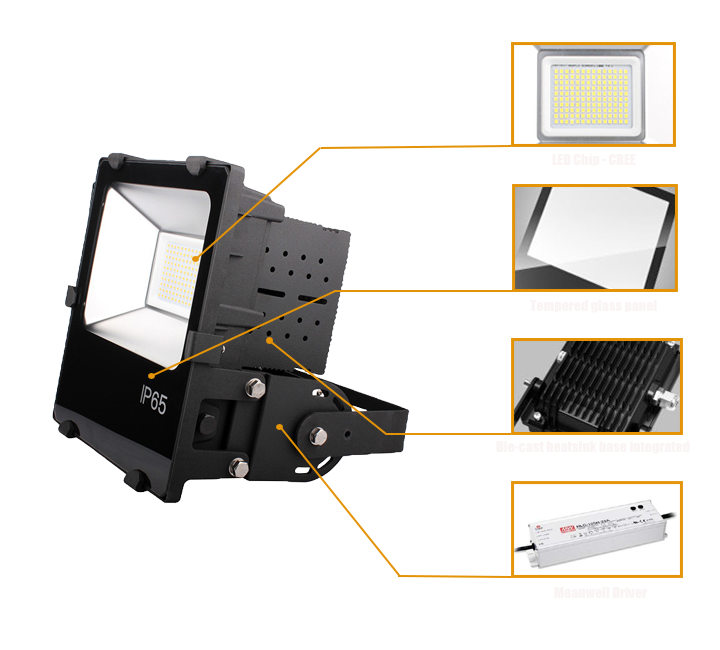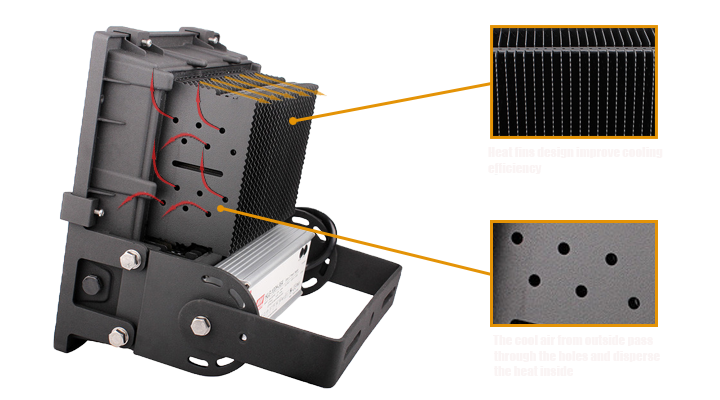What should keep in mind when purchasing LED flood light fixtures
Time:2015-12-11 Views:2908 Compile:SUNPER

Most of environmental conscious people have actually converted to LED flood light fixtures for their eco-friendliness as well as their high efficiency. Even though the LED lights were quite expensive when they were being invented, their prices have been reduced due to technological advancement. In fact, this is one of the major reasons as to why the LED lights have gained lots of popularity. The demand for these lights have as well increased since manufacturers have come up with innovative updates, thus making these lights available in various sizes, shapes, varieties, watts, and colors. The following are some of the basic guidelines when buying LED flood light fixtures.
Energy costs
While the initial cost for every flood light is still high, the entire lifetime cost of an LED flood light is much lower than of equivalent HPS and MHL. When you take energy costs and also resources needed to replace HPS and MHL into consideration, LED light which lasts about 50,000 hours has got a lower lifetime cost.

Life-span of the flood light
Though these lights do last quite longer compared with convectional lamps, you need to consider the life span of the lamp life. In fact, the life-span of an LED light should be its half-life. You need to keep in mind that these lights don’t burn out but gradually fade out. Once a vendor suggests that an LED light will last 50,000 hours, they actually mean that at that particular point, chips will have reached about 50% efficiency, thus the light needs to be replaced. Therefore, the light may last for about 70,000 hours or even more, but then its efficiency will have degraded so much. In fact, using this 100,000 hours’ life like the selling point is totally misleading. Though the LED flood light fixtures doesn’t last forever, they last 6 to 8 times longer than HPS or Mental Halide.
Diversity
LED lights are diverse and many buyers are likely to find out the hard way since many types are usually useless for general lighting applications. As a matter of fact, the finest LED chips do emit light with a Color Rendering Index of 80. CRI is the quantitative measure of the ability of the light source to reproduce colors of different objects in comparison with a natural light source. An LED flood light which uses high quality LEDs will tend to last much more longer than the novelty lamps and 60% longer than a lot of competing lamps which uses inferior LEDs.
Heat generation
LEDs usually generate heat, which is actually the biggest challenge that manufacturers experience when developing LED lighting applications. Nowadays, manufacturers can produce individual LED chips which are bright like a 400-watt HPS, though these LEDs are literally useless for the general lighting since installing them in a fixture usually creates ventilation problems. In fact, LED lights installed in fixtures have to be ventilated properly. Also, the better the chip, the hard it is to properly cool. However, there are many types of LED flood light fixtures on the market that usually don’t take this into consideration. While the typical LED light is hardly warm to the touch, if the chip isn’t properly ventilated, it may prematurely fail.
Lumens
When you are comparing LED flood light fixtures, you must understand lumens. Lumen is simply a standard unit that you can use to compare the LED lights to traditional lamps like incandescent and also the halogens. In short, a lumen is a measure of brightness. Additionally, lumen quantity is important but lumen quality is much more important. For the current LEDS, they have got a luminous efficacy of between 80 to 100 lumens or watt.
Beam spread and color temperature
These are other important tools used to compare LED lights. Both beam spread and color temperature are normally measured in degrees. Color temperature is simply the color of the light emitted. Generally, 3000 Kelvin is actually warm white, which is very close to the infrared light whereas 5000 Kelvin is cool white which is closer to ultraviolet light. However, cool white is much brighter since it’s the natural color of the LED light, but the chips that emits a warm white light needs a phosphorous filter so as to warm the color temperature, hence reducing brightness. On the other hand, beam spread is simply the angle of the light which is being emitted.
When purchasing your next LED flood light fixtures, ensure that you keep the above factors into consideration.
More Post
▇ Production steps of the high power LED flood lamp
A Quick Review Of The LED Flood Lighting System
Next:Using outdoor flood lights to light your outdoor area
User comments
Your current input 0 characters(Reply for at least 6 characters)。
Online Services

Mobile: +86 18938902515 (Mr.Allen)
Tel:+86 755 23159099
Fax:+86 755 61673151
E-mail: sales@sunper.net
zip code: 518108











